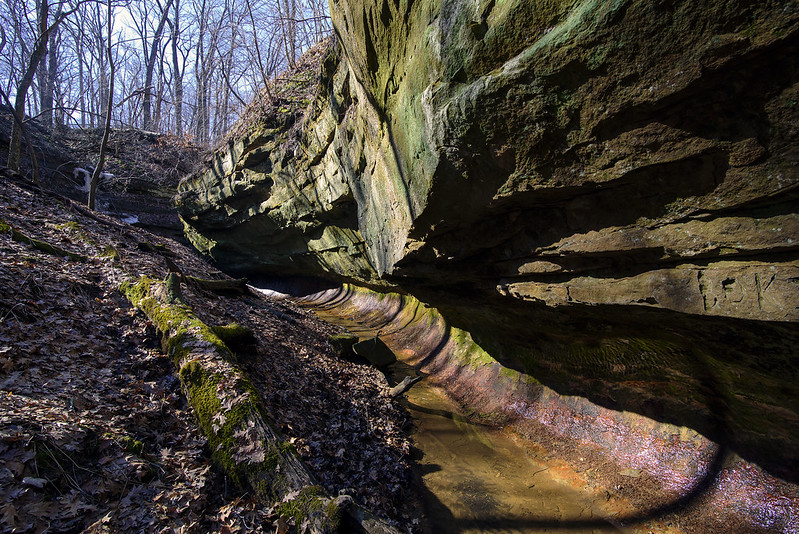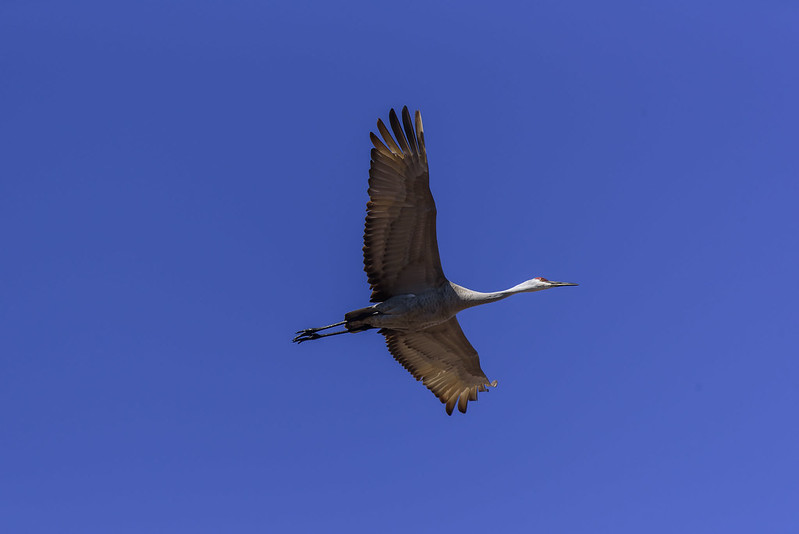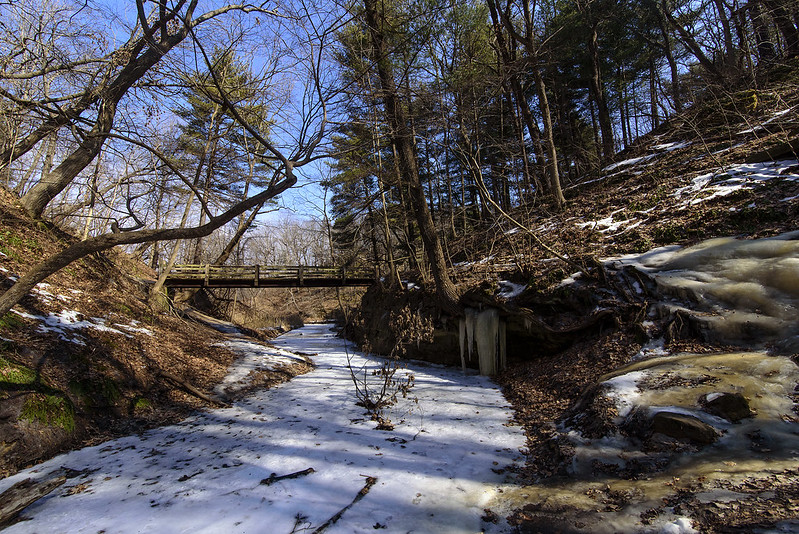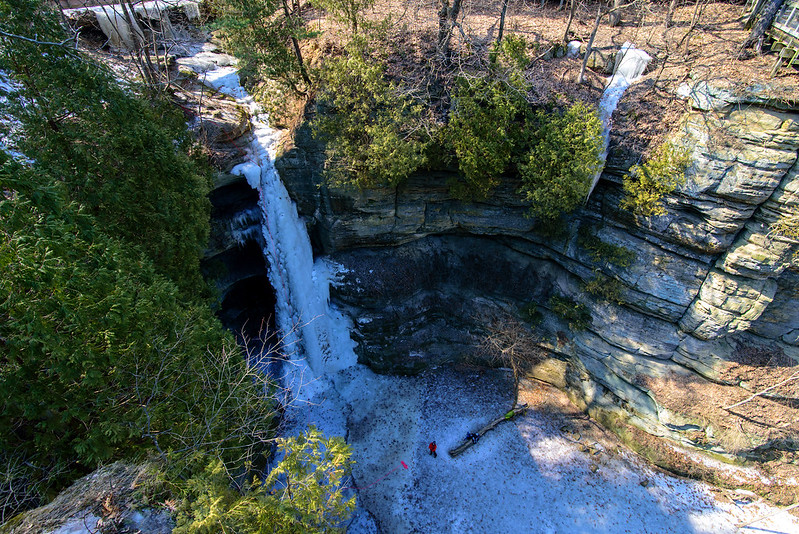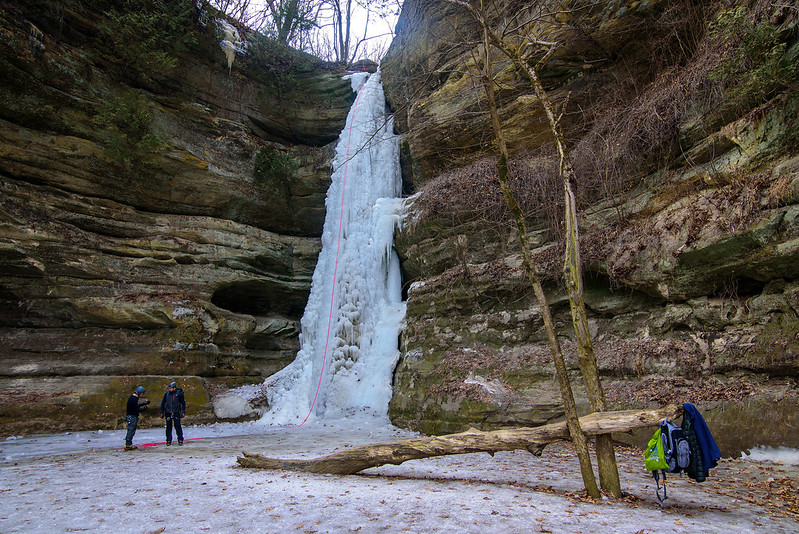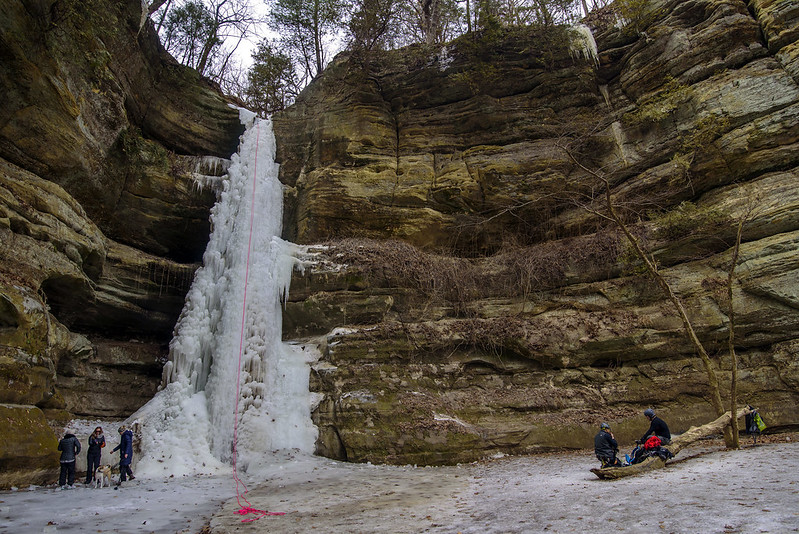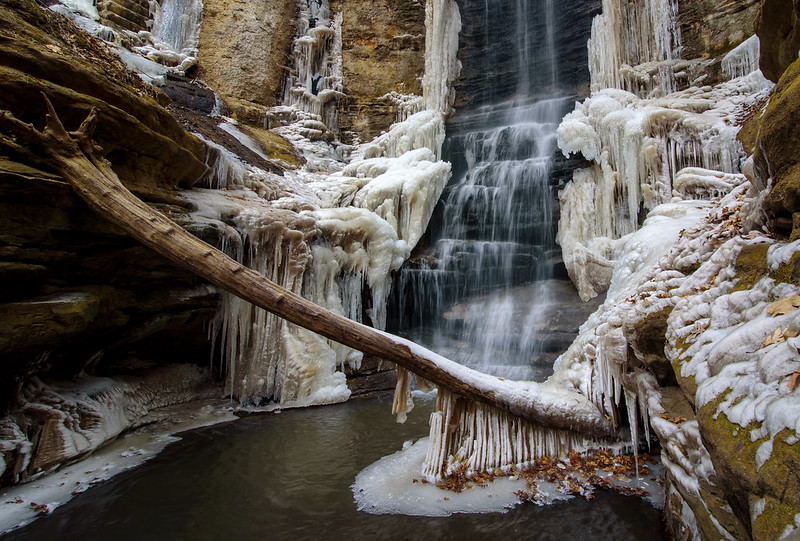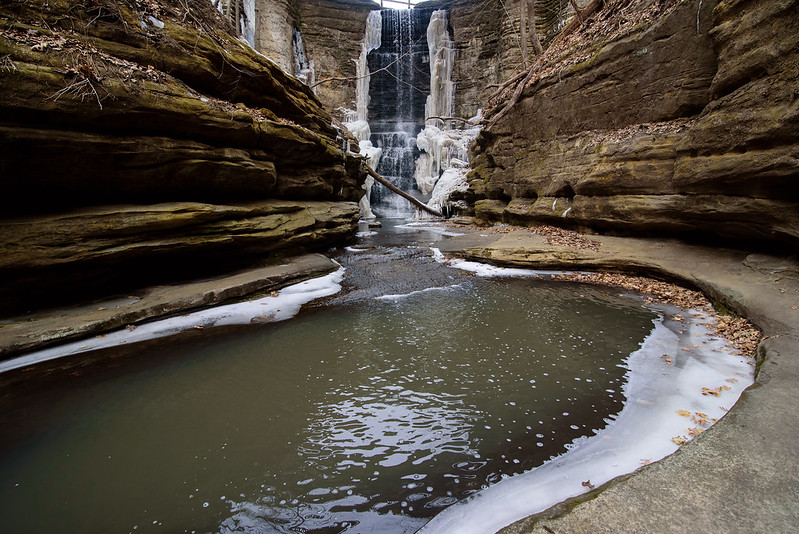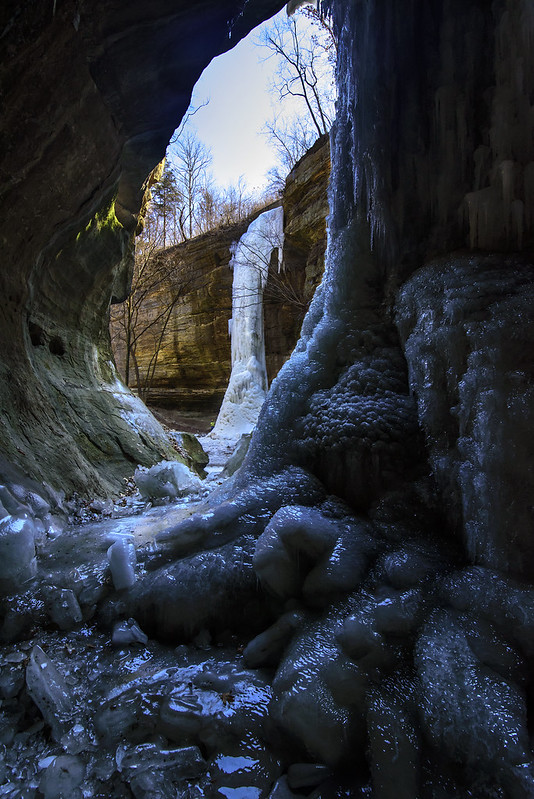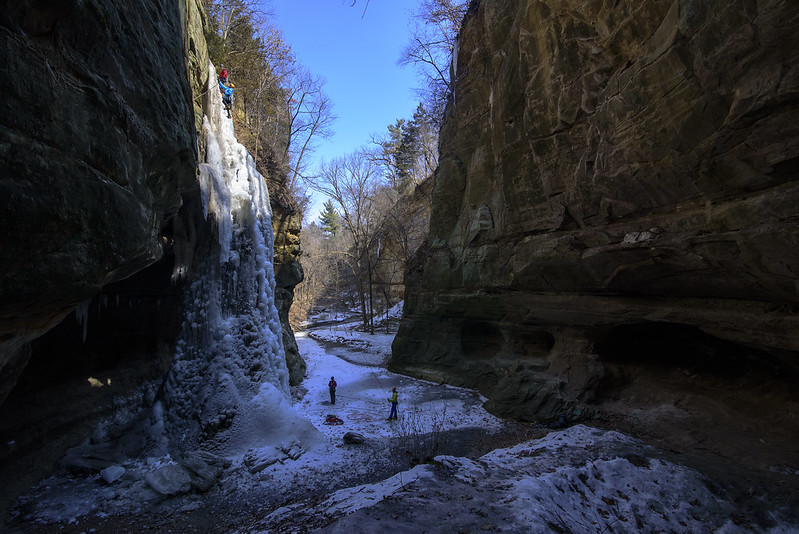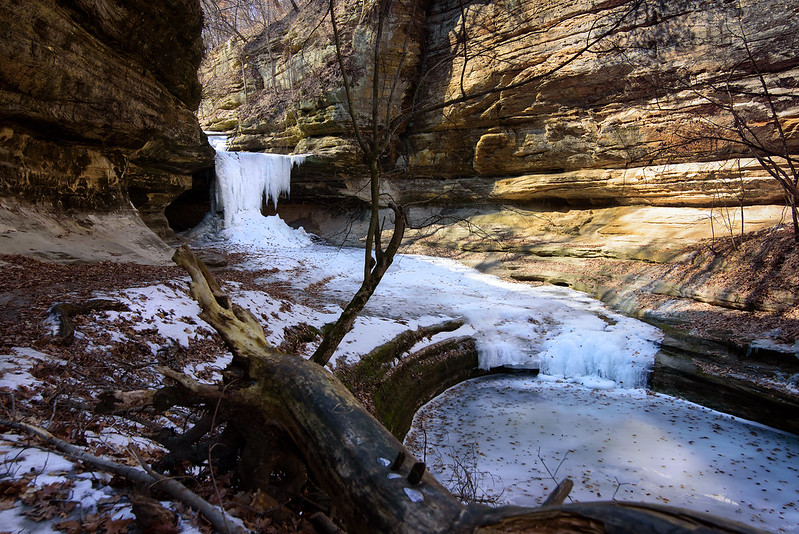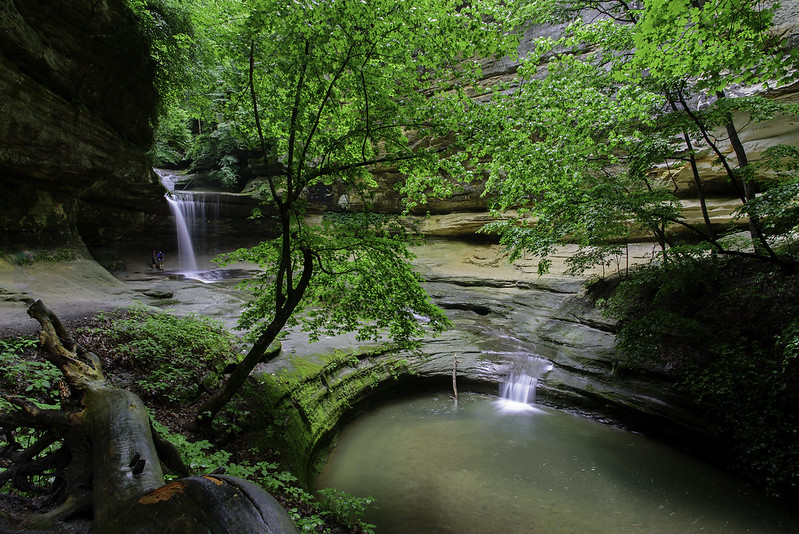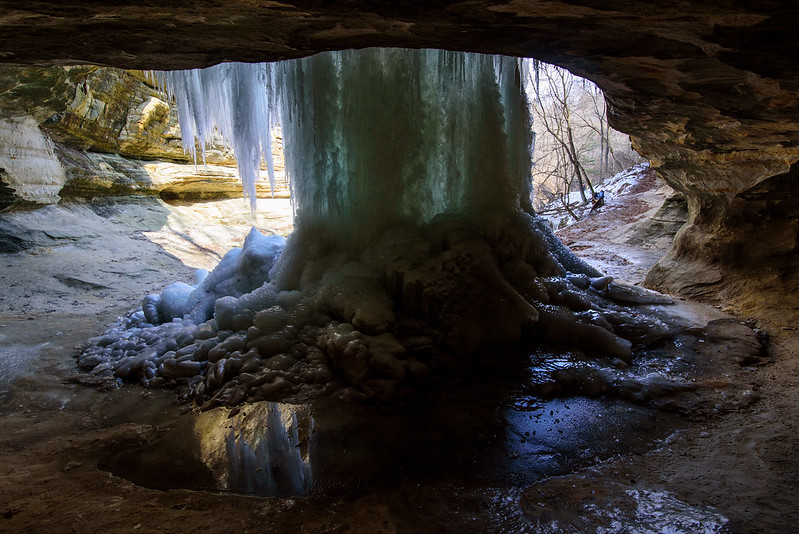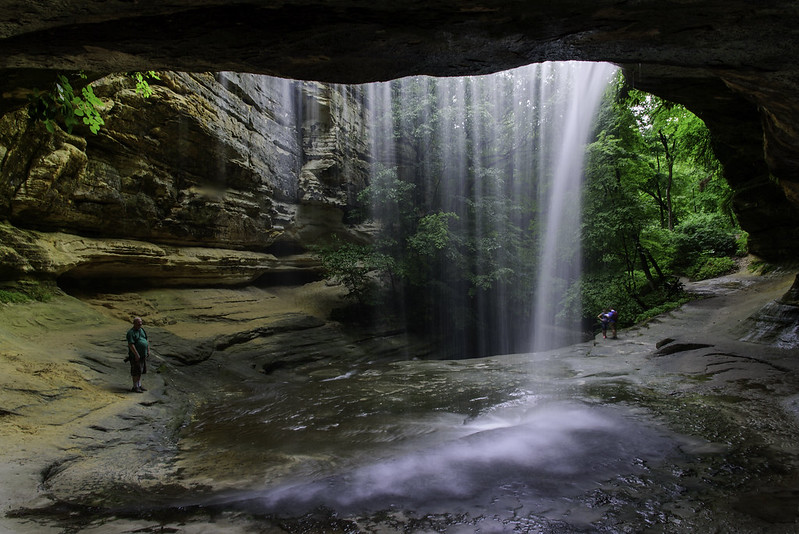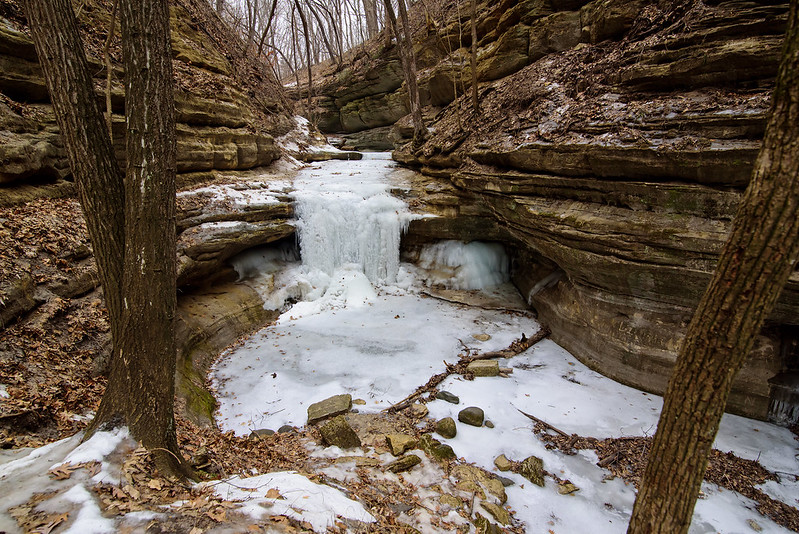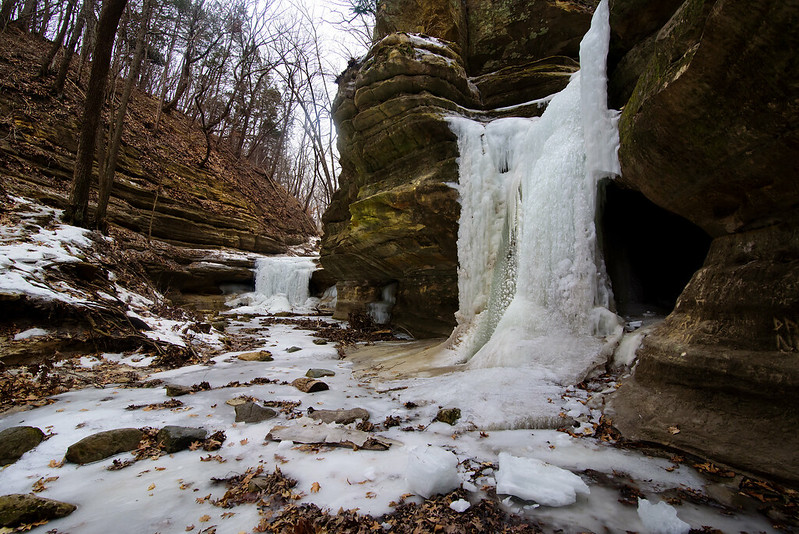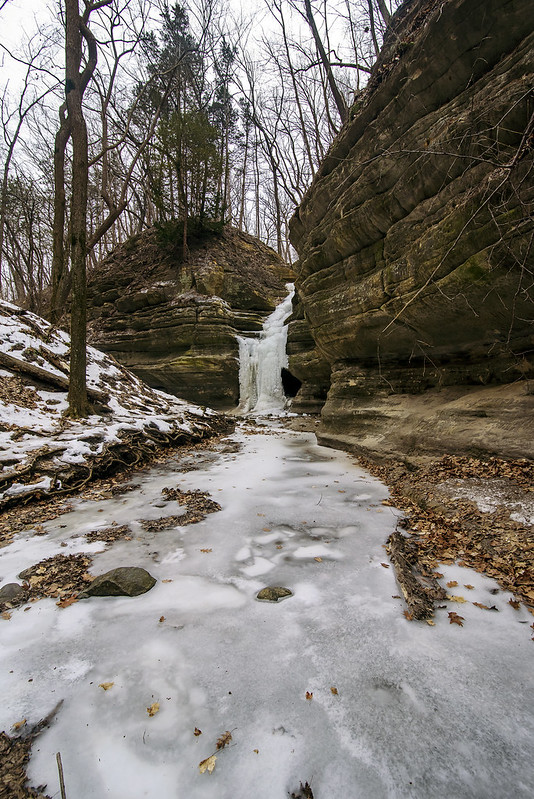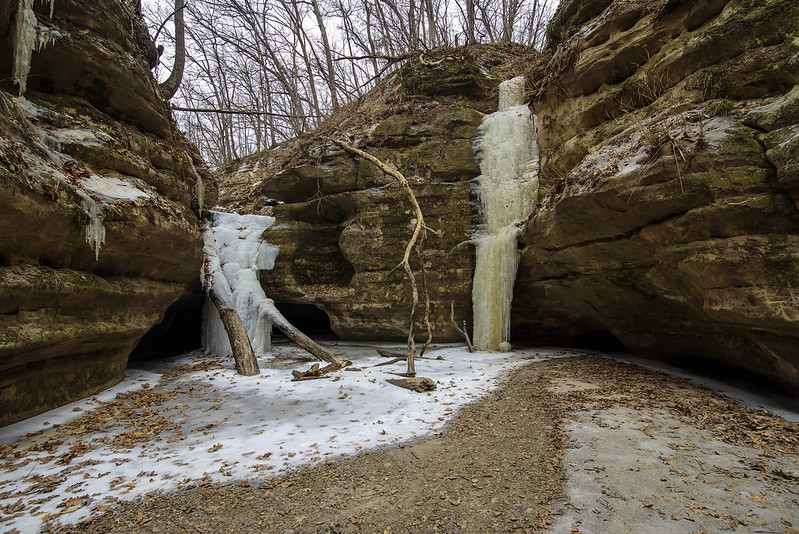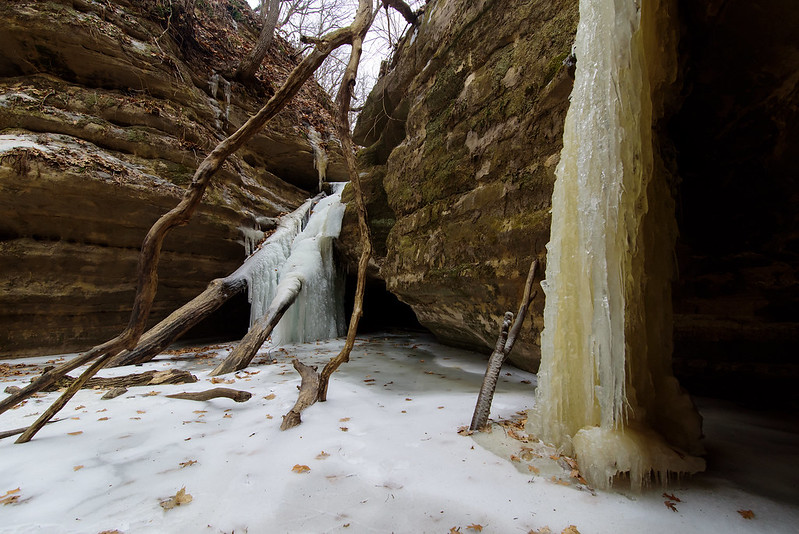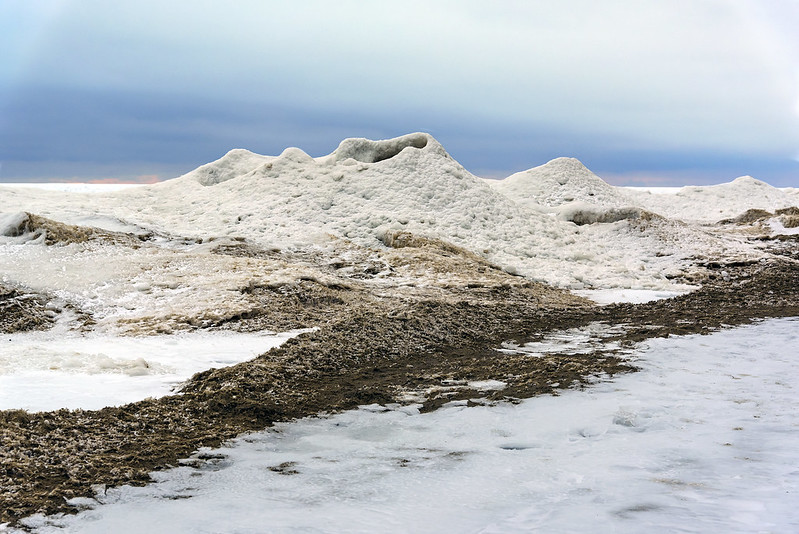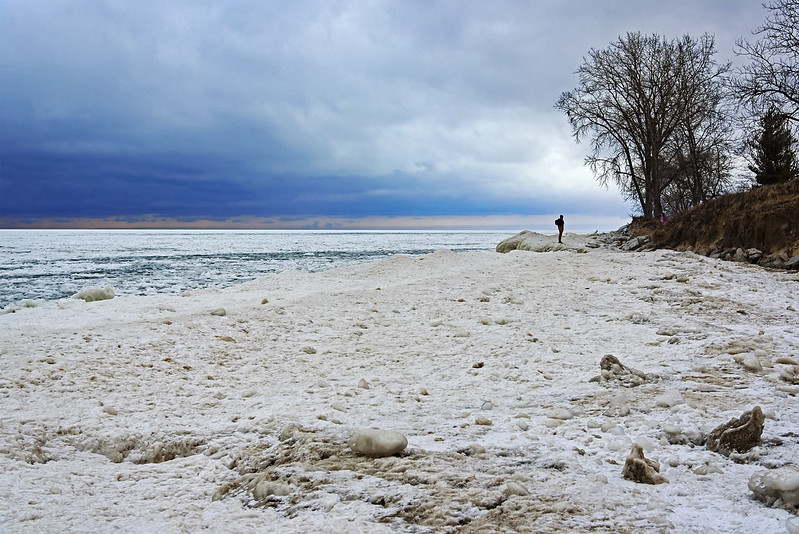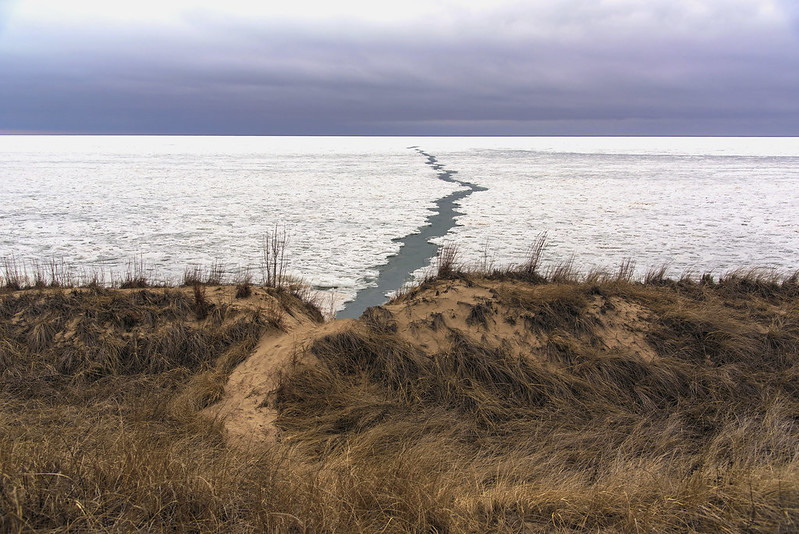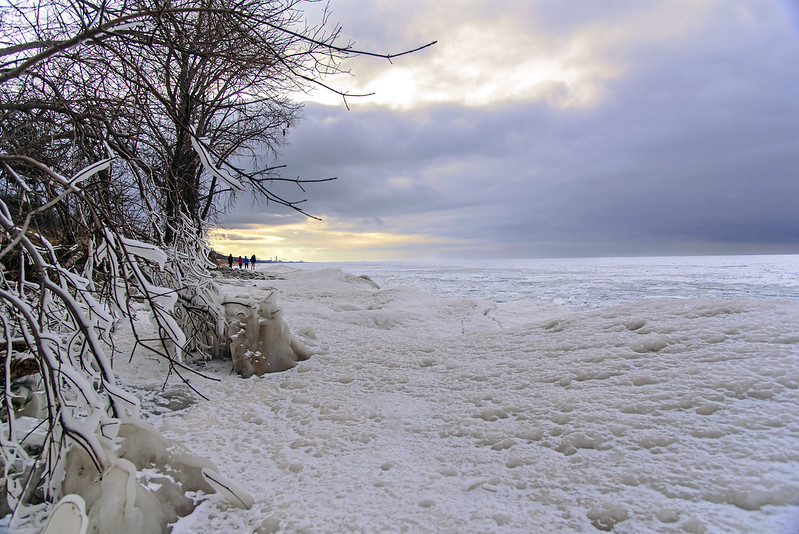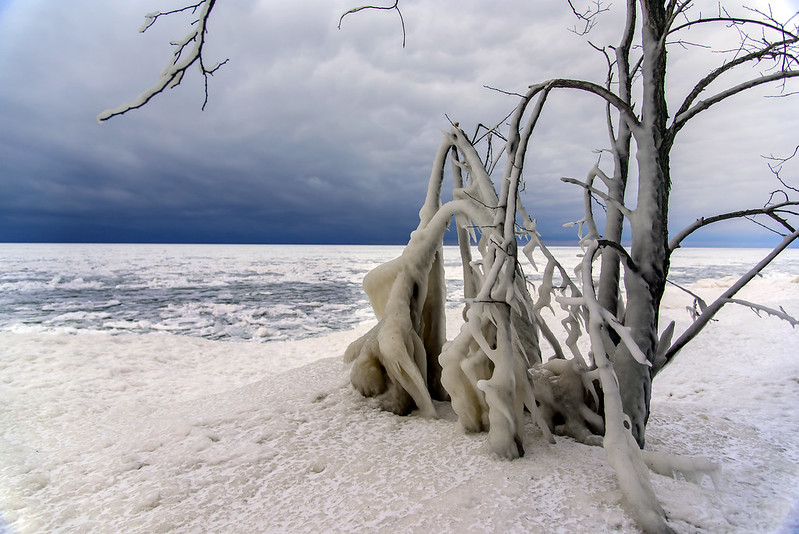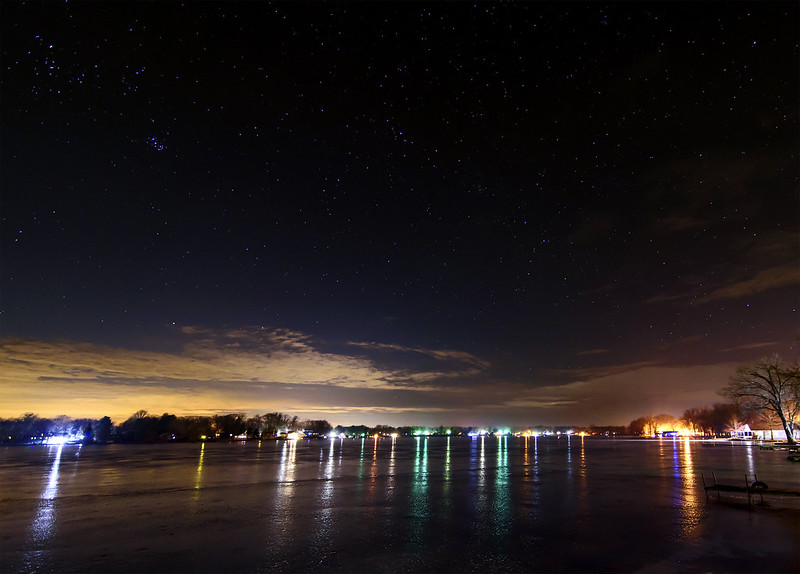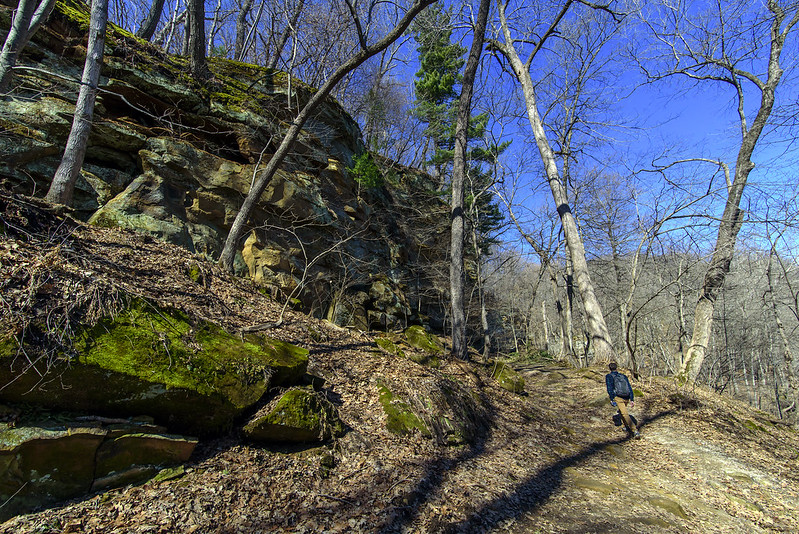
Fresh out of the Devil's Punch Bowl- the name of the previous canyon- we hiked along the foot of the sandstone cliffs toward Steamboat Rock. People can't resist climbing up the rockface for a better view of the surrounding area. "Real" rock climbing is not allowed, and is not a good idea on sandstone anyway, but these places seemed quite safe and worn from previous adventure seekers.
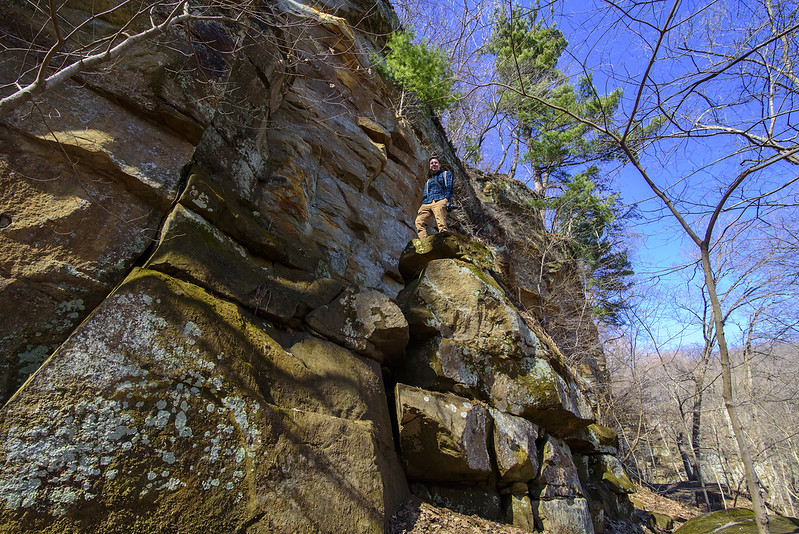
One of the best things about photography for me is the chance to get outdoors and enjoy nature. Every so often, you just need to stop and notice your surroundings, taking in the sights, the sounds, and the smells. It would be a shame to simply capture images without enjoying what nature really is.
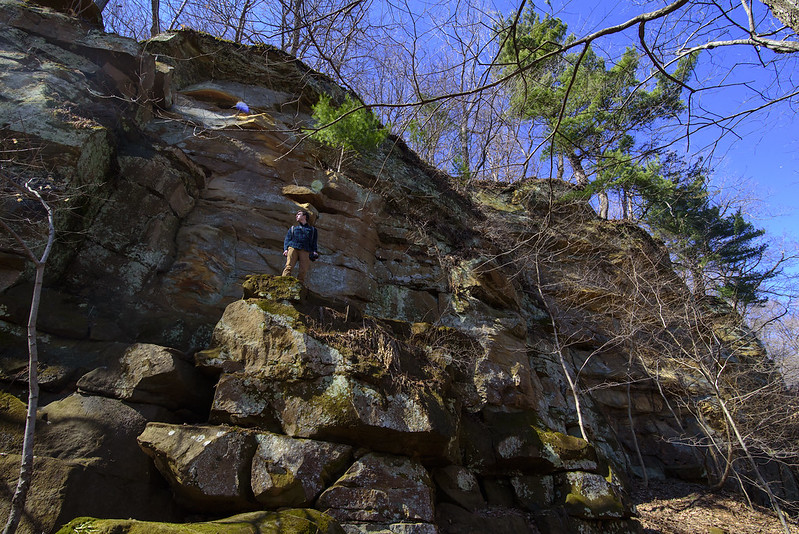
One of the benefits of hiking and exploring this area in early spring is the lack of leaves on the trees. You can see more of the rock formations when the trees are bare. Of course it's a bit less lush and green, but more of the distant features can be seen, and once found, they may deserve a closer investigation.


